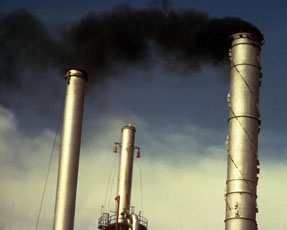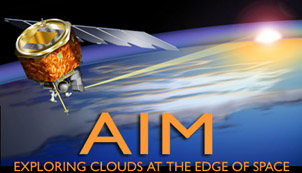Video courtesy of the NSF.
Past Climate Changes and Uncertainty
Climate scientists use "proxy data" to study climates of the past, before humans with thermometers began keeping temperature records. These "proxies" include tree rings, layers within ice cores pulled from glaciers and ice sheets, growth layers in coral, and layers of sediments from the bottoms of lakes and oceans.
By combining data from various proxies, climate scientists have been able to determine the history of Earth's climate extending back millions of years into the past. The proxies don't give us a precise measure of temperature; the temperature history they provide is a bit "fuzzy". However, even with this uncertainty, the data clearly shows that recent global warming outpaces any natural temperature rise that has occurred within thousands of years.
It is important to distinguish between uncertainty and disagreement. The vast majority of climate scientists and organizations that study weather and climate agree that our planet is currently experiencing a very unusual period of rapid warming.
Right-click (Windows) or Option-click (Mac) here to download a copy of this video in QuickTime format.
You might also be interested in:

For a glacier to develop, the amount of snow that falls must be more than the amount of snow that melts each year. This means that glaciers are only found in places where a large amount of snow falls each
...more
Earth’s climate is warming. During the 20th Century Earth’s average temperature rose 0.6° Celsius (1.1°F). Scientists are finding that the change in temperature has been causing other aspects of our planet
...more
Leaders from 192 nations of the world are trying to make an agreement about how to limit emissions of heat-trapping greenhouse gases, mitigate climate change, and adapt to changing environmental conditions.
...more
Climate in your place on the globe is called regional climate. It is the average weather pattern in a place over more than thirty years, including the variations in seasons. To describe the regional climate
...more
Less than 1% of the gases in Earth's atmosphere are called greenhouse gases. Even though they are not very abundant, these greenhouse gases have a major effect. Carbon dioxide (CO2), water vapor (H2O),
...more
Television weather forecasts in the space age routinely feature satellite views of cloud cover. Cameras and other instruments on spacecraft provide many types of valuable data about Earth's atmosphere
...more
Predicting how our climate will change in the next century or beyond requires tools for assessing how planet responds to change. Global climate models, which are run on some of the world's fastest supercomputers,
...more














